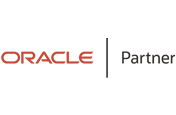We're open through the holidays to support your upskilling goals — book your session today!
We're open through the holidays to support your upskilling goals — book your session today!
Unable to find what you're searching for?
We're here to help you find itOracle WebLogic Server 14c: Administration II Course Overview
The Oracle WebLogic Server 14c: Administration II course is an advanced training program designed for IT professionals who want to deepen their expertise in managing and optimizing WebLogic Server environments. This comprehensive course covers a range of topics, from server administration techniques to Application deployment and Integration with cloud services.
Learners will explore the process of upgrading WebLogic Server, Creating domain templates for easy configuration, and ensuring efficient startup and recovery procedures. The course delves into automation through the WebLogic Scripting Tool (WLST) and Managing servers using RESTful APIs. Security is also a key focus, with lessons on Configuring SSL and Managing the security realm.
Additional modules cover disaster recovery, Managing data sources, Diagnostics, and the Integration of WebLogic with Coherence. The course also teaches best practices for deploying applications and Utilizing WebLogic with Docker and Kubernetes, as well as Special optimizations for Exalogic. Finally, learners will get an overview of Oracle Cloud and the Oracle Java Cloud Service, preparing them to manage WebLogic Server instances in cloud environments.
Purchase This Course
USD
View Fees Breakdown
| Flexi Video | 16,449 |
| Official E-coursebook | |
| Exam Voucher (optional) | |
| Hands-On-Labs2 | 4,159 |
| + GST 18% | 4,259 |
|
Total Fees (without exam & Labs) |
22,359 (INR) |
|
Total Fees (with Labs) |
28,359 (INR) |
Select Time
Select Date
| Day | Time |
|---|---|
|
to
|
to |
Scroll to view more course dates
*Inclusions in Koenig's Learning Stack may vary as per policies of OEMs
Suggestion submitted successfully.
Koenig Learning Stack
Inclusions in Koenig's Learning Stack may vary as per policies of OEMs



